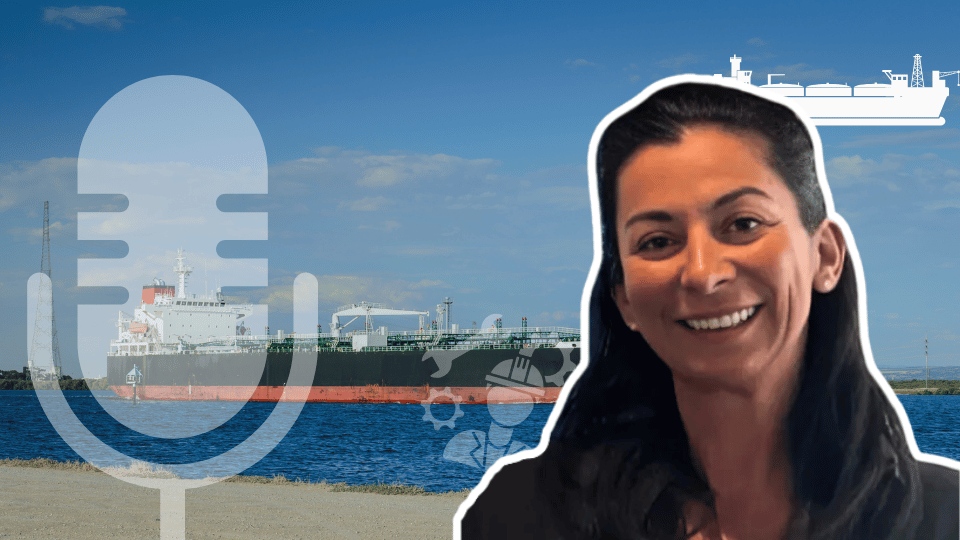
The Biggest Wind Turbines In The World
21 Dec, 20214:20Only four years ago, the maximum capacity for wind turbines was 8MW. Now, just a few years l...
Only four years ago, the maximum capacity for wind turbines was 8MW. Now, just a few years later, this figure has doubled, as top wind energy companies work to develop ever larger and more efficient turbines.
As stated by Aurélie Nasse, Head of Offshore Product Market Strategy at Vestas, the wind industry’s willingness to push limits is one of its greatest strengths.
The capacity to produce more energy from a single turbine means fewer turbines need to be built at each wind farm. This means a lower capital expenditure for companies and simplified operation and maintenance processes, increasing the accessibility and affordability of Renewables for both companies and end-users.
So, as the race towards 20 MW turbines shows no sign of abating, here are the biggest wind turbines bringing the Renewable Energy industry closer to this milestone.
MySE 16.0-242 – the world’s biggest wind turbine
MingYang Smart Energy, a Chinese wind turbine manufacturer, currently holds the record for the biggest wind turbine in the world.
The MySE 16.0-242 is an offshore hybrid drive wind turbine. Its diameter is 242 meters long, its blades are 118 metres long and the turbine has a 46,000-square-meter swept area.
The turbine is designed for high-wind IEC IB including typhoon-class IEC TC (this refers to the international standards published by the International Electrotechnical Commission regarding wind turbines) and has a nameplate capacity of 16MW.
The MySE 16.0-242 is said to have the industry’s largest rotor as well as the highest nominal rating. One turbine can generate up to 80,000 megawatt-hours of electricity over a year, which is enough energy to power more than 20,000 homes. By comparison, the company’s previous turbine model, the MySE 11.0-203, produces 45% less energy.
The turbine is designed to have a 25-year lifespan, throughout which it can eliminate over 1.6 million tonnes of carbon dioxide, compared to coal-fired power generation.
Full prototype rollout for the turbine is expected in 2022, which will then be followed by prototype installation in the first half of 2023 and commercial production in the first half of 2024.
The MySE 16.0-242 is the first of MingYang’s new 15 MW+ offshore product platform. The company’s goal is to develop a range of model variants that are adaptable to different offshore environments, from the constantly windy North Sea in Europe to the typhoon-prone South China Sea.
V236-15.0 MW – A turbine designed for high wind conditions
Vestas’s V236-15.0 MW is capable of producing up to 80GWh every year, enough to power around 20,000 European homes, displacing more than 38,000 tonnes of CO2 – equivalent to removing 25,000 passenger vehicles off the road every year.
The turbine has a 43,743 square metre swept area, a nameplate capacity of 15MW, and a 25-year lifespan. Its rotor diameter measures 236m, its capacity factor is over 60% and it has 115.5m blades.
Stretching 280 metres into the air, the V236-15.0 MW draws on the Danish company’s previous EnVentus and 9MW platforms, using advanced system designs such as efficient geared drivetrain, their CubePower converter, and their Control System 8000.
Vestas designed the offshore turbine for high wind conditions, which is rated to withstand IEC 1 extreme wind conditions of up to 50m/s and IEC T up to 57m/s.
The offshore turbine is applicable globally and is said to offer 65% more energy per year than the previous V174-9.5 MW. For a 900MW wind farm, using the turbine would raise production by 5% whilst using 34 fewer turbines.
In October 2021, Vestas announced that they would be installing the V236-15 MW prototype at the Østerild National test centre for large wind turbines in Western Jutland, Denmark. The installation is scheduled for the second half of 2022 and its first kWh is expected for the last quarter of the same year.
During the initial operation period, Vestas will gather the necessary data to obtain a Type Certificate, a key step on the way to reaching serial production of the turbine planned for 2024.
SG 14-236 DD – Siemens Gamesa’s biggest wind turbine to date
Siemens Gamesa’s SG 14-236 DD offshore wind turbine is their biggest model to date, with a nameplate capacity of up to 14 MW, and 15 MW with the Power Boost function. It has a rotor diameter of 236 metres, a swept area of 43,500 square metres, and its annual energy production is more than 30% higher than that of its predecessor, the SG 11.0-200 DD.
The turbine uses a new generation of the company’s offshore direct drive turbine technology, which uses fewer moving parts than geared turbines, leading to greater performance whilst maintaining reliability.
Serial production for the SG 14-236 DD turbine is planned for 2024.
In October 2021, Siemens Gamesa installed the nacelle for the smaller prototype version of the SG 14-236 DD turbine, the SG14-222 DD, at the test centre in Østerild, Denmark. The SG14-222 has a 222m diameter rotor, 108m blades, a nameplate capacity of 14MW (15 MW with Power Boost), and a swept area of 39,000 square metres. The model is expected to be commercially available in 2024.
Siemens Gamesa has already signed preferred supplier agreements for the SG14-222 turbine to the 300 MW Hai Long 2 project in Taiwan and the 2.6 GW Dominion Energy Coastal Virginia Offshore Wind (CVOW) commercial project in the US.
GE Haliade-X 14 MW – the first wind turbine to operate at 14MW
In October 2021, General Electric’s Haliade-X 14 MW prototype started operation in Rotterdam, Netherlands. With this milestone, GE Renewable Energy has become the first company to operate a turbine at this power output.
The Haliade-X 14 MW is an upgraded version of the Haliade-X 13 MW, which received its type certification in January 2021. Certification measures have now officially been started for the newest model.
A single turbine can generate up to 74 GWh of energy every year, which saves up to 52,000mtp of CO2 – equivalent to removing 11,000 cars off the roads for a year. The GE Haliade-X 14 MW is also very efficient, with a capacity factor of 60-64%. It has a 220m rotor, a 107m blade, and can be as high as 260m. A single rotation of one of these turbines can generate enough electricity to power a UK household for two days.
Although the Haliade-X is best suited for medium to high wind speeds, its large capacity means it can produce electricity even at lower wind speeds, thus increasing profits and lowering the levelized cost of energy.
The Haliade-X 14 MW is set for its commercial debut at the Dogger Bank C offshore wind farm, located off England’s northeast coast, where GE Renewable Energy will provide 87 of its new models.
NES Fircroft and supporting the Renewable Energy industry
NES Fircroft has been supporting the Renewable Energy sector for over 20 years. We are highly experienced when it comes to providing staff to the Renewable Energy industry, supplying technical personnel and engineers across a range of sectors such as Solar PV/Solar Thermal, Biomass, Geothermal, Offshore and Onshore Wind, Hydroelectric, and Natural Gas.
We work in partnership with our clients offering a wealth of knowledge, a global network of talent and local market expertise that can deliver complete Renewables workforce solutions.
Get in touch with our dedicated Renewable Energy Recruitment teams to find out how we can support your project.
We work on some of the most exciting renewables projects globally, meaning we have plenty of renewable energy job opportunities for engineers looking to enhance their energy careers.








